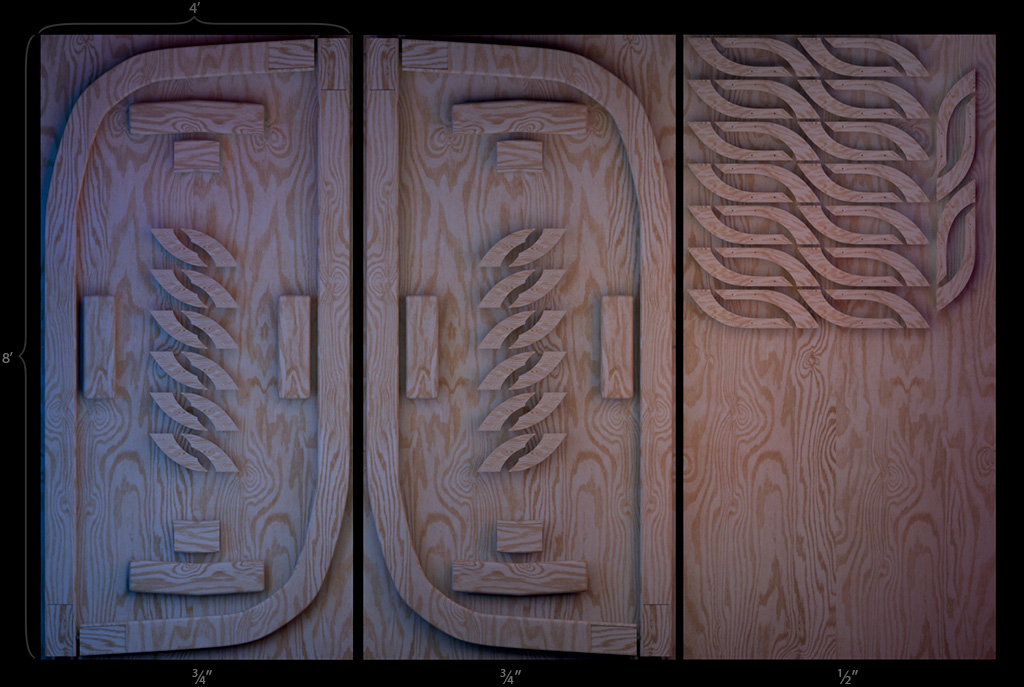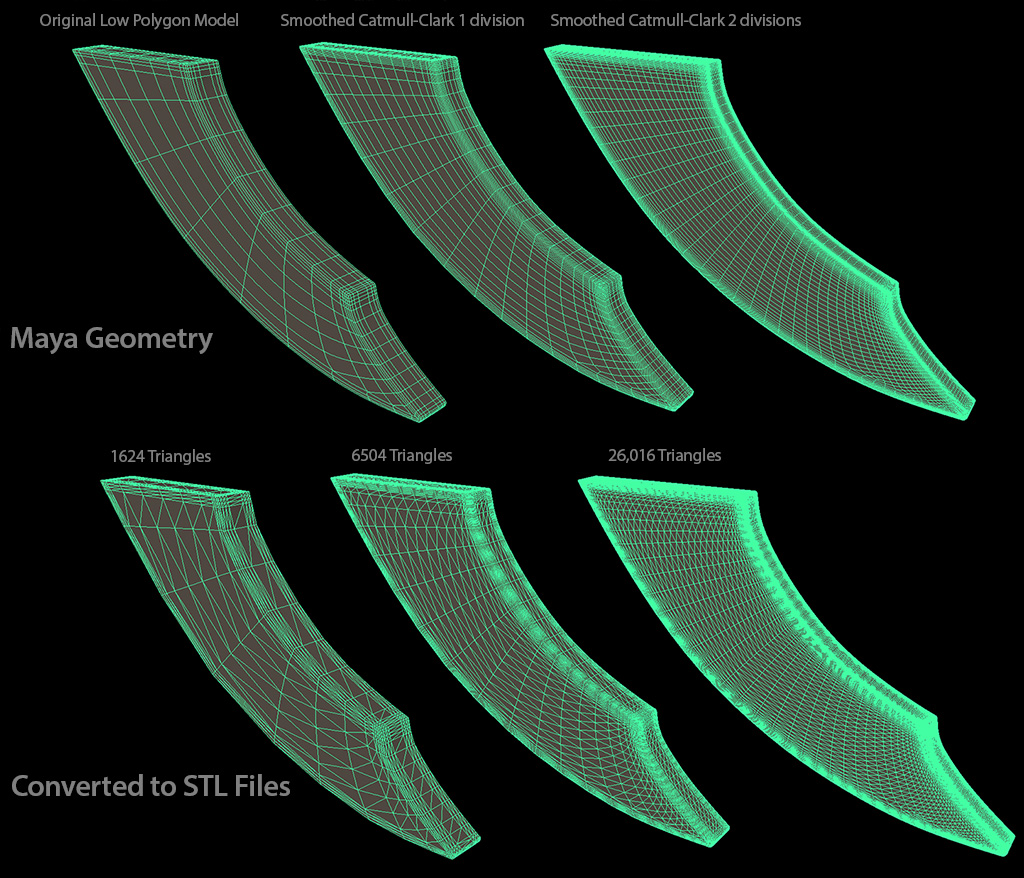Plywood Canvas Stretcher
Hello John,
Thank you for looking over this webpage. Here is a link to the painting event in the park at the end of July. The rest of this page will be about the parts for the large canvas stretcher I am hoping you can help me cut with your CNC services.
The total material for this 16′ x 8′ canvas stretcher frame would come from 3 sheets of plywood. If the CNC is able to cut marine grade or Baltic plywood, I would prefer to use that for its structural integrity, and because it would not have any voids in the lamination. Two of these sheets would be 3/4” plywood and the third would be 1/2” thick.
This render is to show you the number of pieces to be cut. I would follow your instructions on how to deliver the files for each piece to you. I had asked you on the phone if we could utilize the entire sheet of plywood right up to the factory edge. After learning there are often clamps on the edges to hold material, I redesigned the outer frame and made it all fit with 1/2″ extra wood on all edges.
This frame is made to stretch a roll of canvas I have ordered that is 96” wide and 3 yards long. This frame will allow 3” of extra canvas to be wrapped around the edges and stapled on the underside to stretch it.
How could we accomplish rounding the edges on certain parts, like the main canvas stretcher frame? The bridges connecting it in four places underneath also have one side of rounded edges. This will help the canvas stretch more smoothly and hide what might be an otherwise abrupt line showing through the stretched canvas.
These four bridges would be bolted together and not glued, to allow the frame to be taken apart and reassembled for travel and storage. While I could get by without your machine having to round the edges, I would be amazing to cut these recessed areas with your CNC, instead of taking the time to make a router jig to do it as accurately.
Because this 16′ frame is made from four main pieces cut from 4′ x 8′ sheets of plywood, these 16” bridges cut from the 3/4” material will provide support from underneath, while a piece of 1/8” aluminum inset into the wood from above will support the top. The aluminum would be inset so its presence will be hidden under the stretched canvas, which shows every imperfection underneath, like the Princess and the Pea.
While I have modeled these rounded edges in Maya, I am wondering if would make more sense for me to provide you with a version of the pieces which could simply be cut along a path and use a hand held router to make these rounded edges? Would that reduce the machine time and cost considerably? If it is a lot, I might need to do that. Although, the time I would pay a friend to help me do the routing work would also be a cost.
There are 6 ribs to help the frame resist the compressing force of the stretched canvas. I will cut these 6 ribs to length from 1″x2″ dimensional lumber and would not use time for them on your CNC. I did however, design the center piece of the elbows which will hold each rib to be cut using your CNC from the 3/4” plywood. This way, these uniquely shaped pieces can match the thickness of the 1×2 (or 3/4”) dimensional lumber. The two 1/2” plywood pieces will embrace each rib and enable two bolts to clamp them in place, also allowing the frame to be disassembled.
It seems like it would be ideal to ask your CNC machine cut holes in pieces like these elbows, instead of marking each one by hand and using my drill press. If the CNC could do this without too much added difficulty, then the holes in these two identical pieces could align perfectly when it comes time for me to assemble it.
I am getting good at modeling using Maya but I am afraid I don’t know enough about Fusion 360 to help. I would like to learn. This is my first CNC project. I realize that in order to accomplish it, I will be paying for your time to lay out my pieces in Fusion and convert them to GCode for your machine. As you suggested, I converted a few of the models to OBJ and STL files.
I would like your direction on how smooth to make them, because increasing their smoothness also increases the number of triangles. I read there is a maximum number of 25,000 triangles for some CNC software. For shapes like this one, where there are no beveled or rounded edges, would it be best for me to make vector images of each piece? I read that CNC software can recognize vectors as paths.
I would not only be grateful for your help to accomplish this project in time for the event, I have been learning 3D each night on my own for a decade in hopes to make this canvas stretcher. Your CNC machine would make its final expression!
Jesse
206-406-9292








